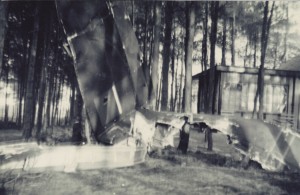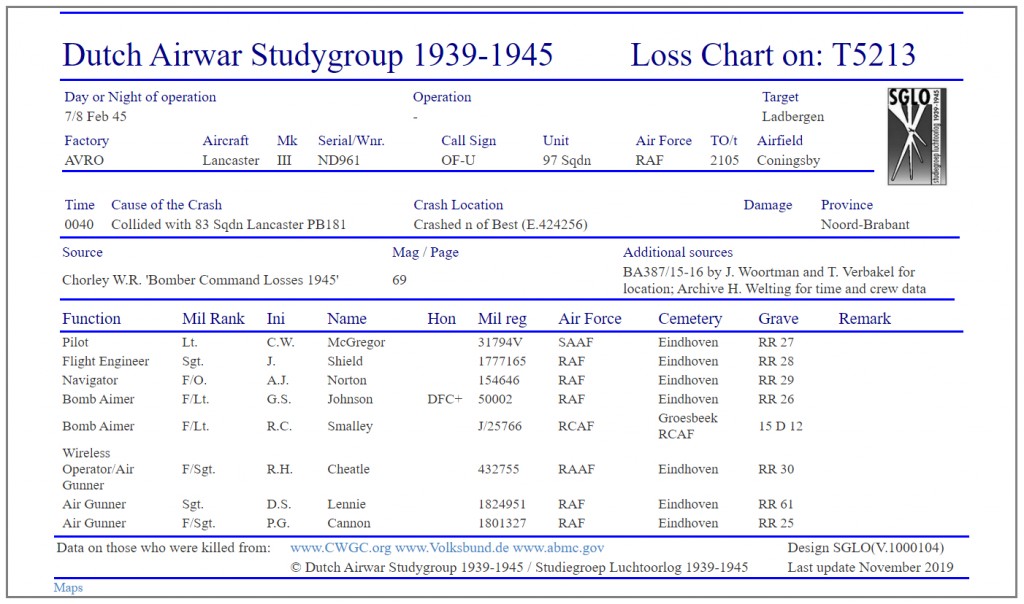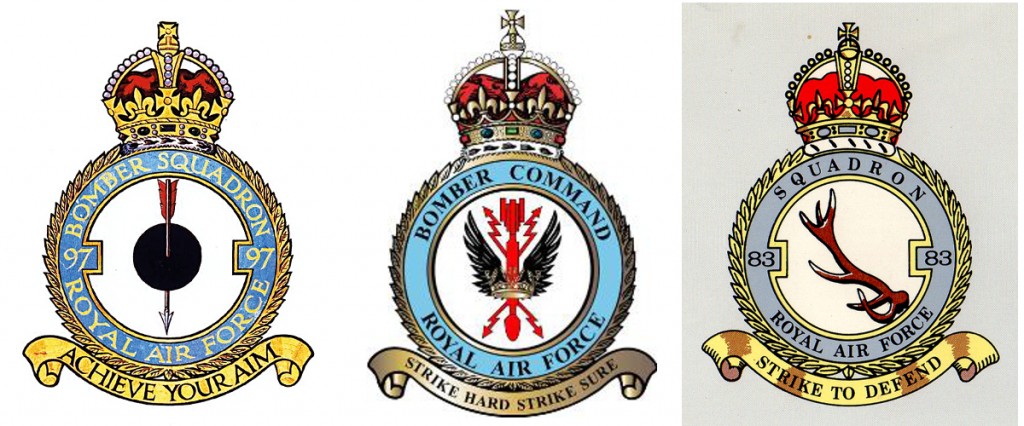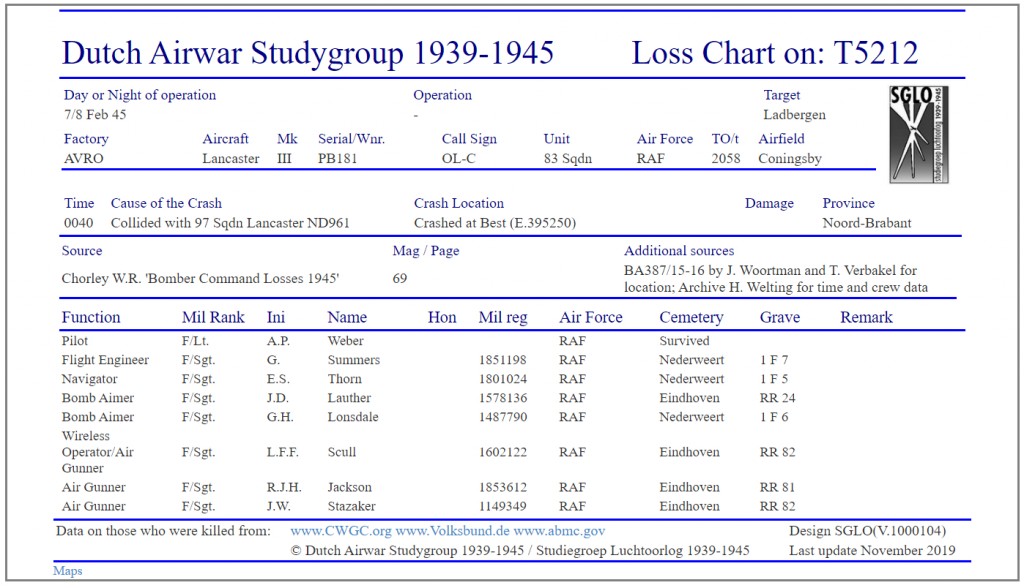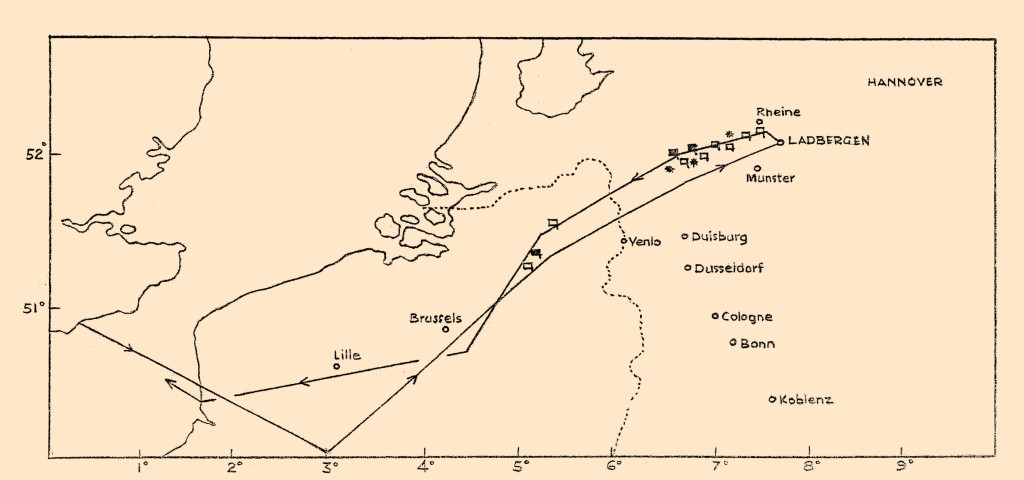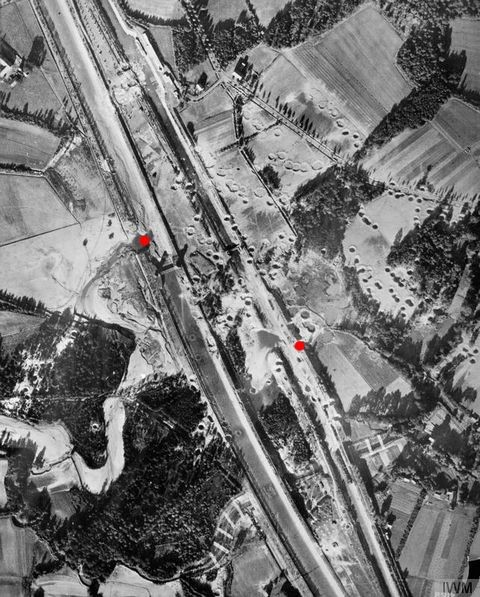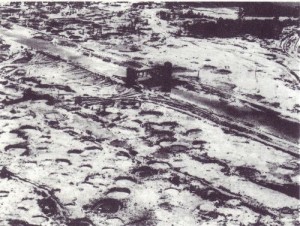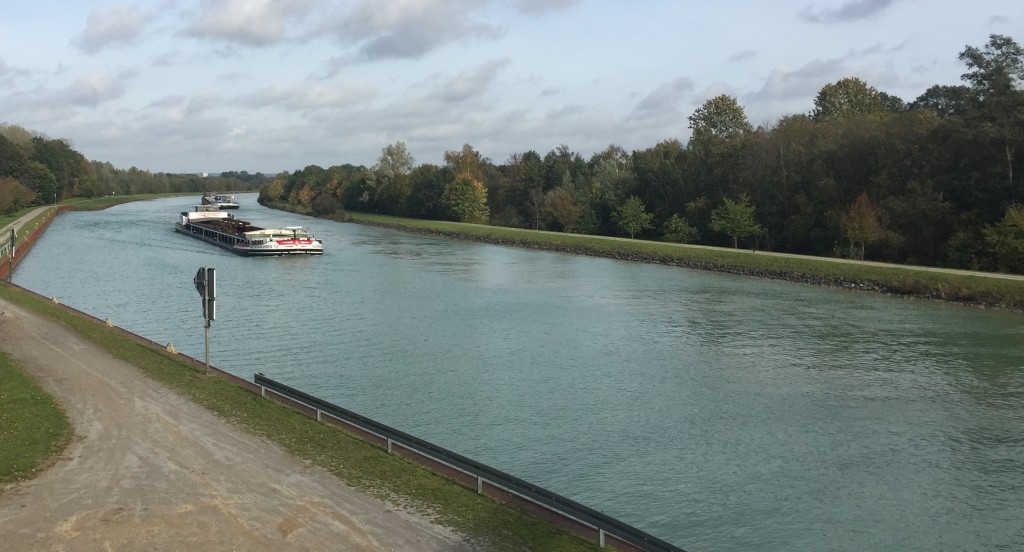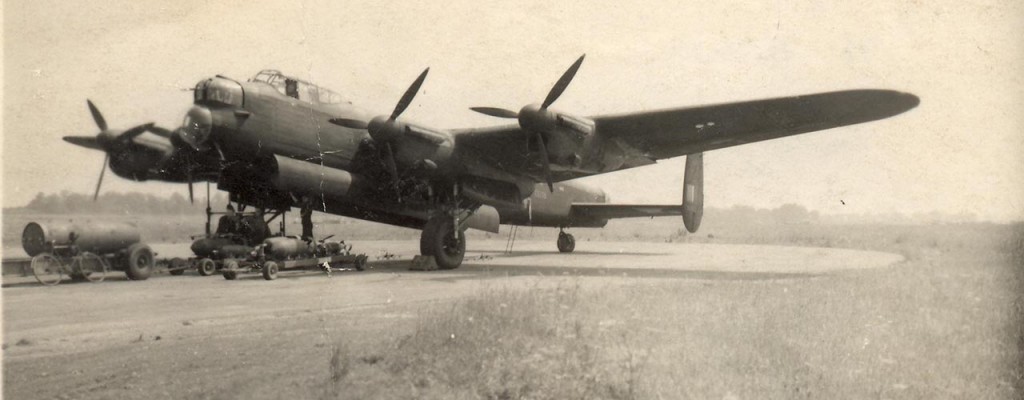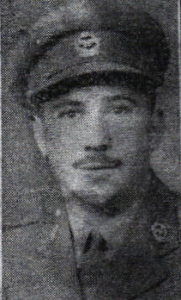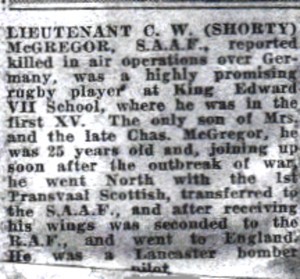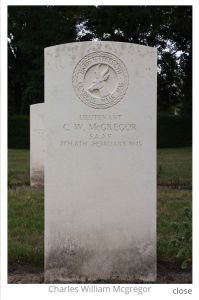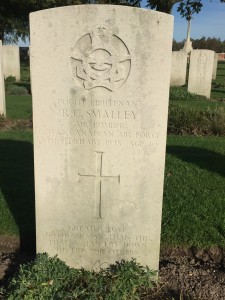On 8 February 2020, the unveiling of the monument in memory of the fifteen fallen crew members of two Lancaster bombers took place. The flight crew of two English bombers, pilots C. McGregor and A. Weber collided with each other over East Brabant on their return from an air raid on Ladbergen, Germany. The idea of a monument came about through a special task force working closely together with the Museum Wings of Liberation and was financed by a group of sponsors. On 8 February 2020, it was exactly 75 years ago that the bombers crashed to the ground in the forests between Best and Son. This article tells the story of how and why this fatal collision could have happened and the reason for the raid on Ladbergen in Germany.
Monument
Since the precise location of the crash site could not be determined, it was decided to take the area where the most debris of both aircraft (engines, cockpit) was found: Zandstraat in Son and Lisseven in Best. To pay tribute to the casualties of war, the location of the monument had to be easily accessible to the public. Hence, the grounds of the Museum Wings of Liberation was the best option. With this monument, the members want to make sure that the memory of those that were either hurt or killed while fighting for peace is kept alive by giving them a respectful place of remembrance.
Circumstances of the disaster
Bad weather conditions, poor visibility and heavy air defenses possibly were at the root of the high-level collision, which caused the pilots to crash near Best. The aircraft of pilot, McGregor, crashed near the Zandstraat in Son (see photos). Pilot Weber’s aircraft near the Lisseven in Best.
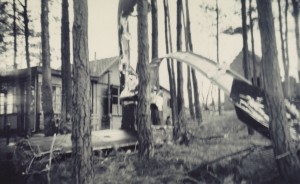
Crash site Zandstraat (photos’ archives local history club of Son en Breugel)
Because both aircraft collided in midair, the damage was considerable and the aircraft were no longer controllable. When an aircraft goes into a dive, enormous aerodynamic forces are released on the aircraft. A Lancaster has an empty weight of 17 ton with a wing surface of 120 square metres and usually flies at an altitude of approximately 8 km.
Weather forecast February 8, 1945
Temperatures on February 8, 1945 were between 2.1 ° C and 7.9 ° C and averaged 5.5 ° C. There was 1.8 mm of precipitation for 1.6 hours. There was 0.1 hours of sunshine (1%). Average wind speed 4 Bft (moderate wind) coming predominantly from the South-South-West.
Source: KNMI meteorological station, De Bilt
Because of these forces, the aircraft disintegrated, with debris scattered over a large area. Photos of the aircraft that crashed in the Zandstraat clearly demonstrate this. Research by Planehunters, in particular Mr Hendrix, who investigated the area with a metal detector, shows that parts of these aircraft were found in a large area.
Collision over East Brabant
That particular night of 7 February 1945, approximately half an hour after midnight, two British bombers, both Avro-Lancasters, type III, collided. These two Lancasters were part of a fleet of 177 Lancasters and 10 Mosquitoes from Group No 5. Target was the destruction of the aqueducts near Ladbergen, in particular the reclamation of the Dortmund-Ems canal banks —an important transport route for the German war industry. Previous air raids on Ladbergen had already led to the loss of dozens of Lancaster bombers, as was the case on 7 and 8 February 1945. Five Lancasters, including those of captains McGregor and Weber, did not return. Germany fought back by using anti-aircraft guns, through which the allied bombings were not successful.
The Bomber history website reports:
“The fifth attack around midnight on February 7, 1945 was not a success. The air defense on site proved to be considerably strengthened and could prevent the fleet of 177 Lancasters from concentrating the attack on the actual goal. As a result, the fleet became scattered and many of the bombs with delayed ignition ended up in an open field. The target channel remained virtually undamaged. Descriptions of the raid range from “quiet trip” to “disorganized gang”. The accompanying Pathfinder aircraft group, which flew along as an escort and to mark the target, reported: “It was by no means a success, but hopefully we have caused some damage to the enemy.”
Also, in other respects the raid was a mess because all communication between the aircraft and the base of departure, the RAF airport Coningsby in Central England, immediately broke down after take-off.

After departure, all radio communication between the Bomber Command and the Lancasters was broken.
Locations of the Crash
Research by J. Woortman and T. Verbakel on documents from the RAF Aircraft Repair Unit revealed the locations where both aircraft had crashed. The coordinates 51 30’06 “N / 005 25″ 30 “O and 51 30’28″ N / 005 27’59 “O pinpointed the two locations of the crash (see map).
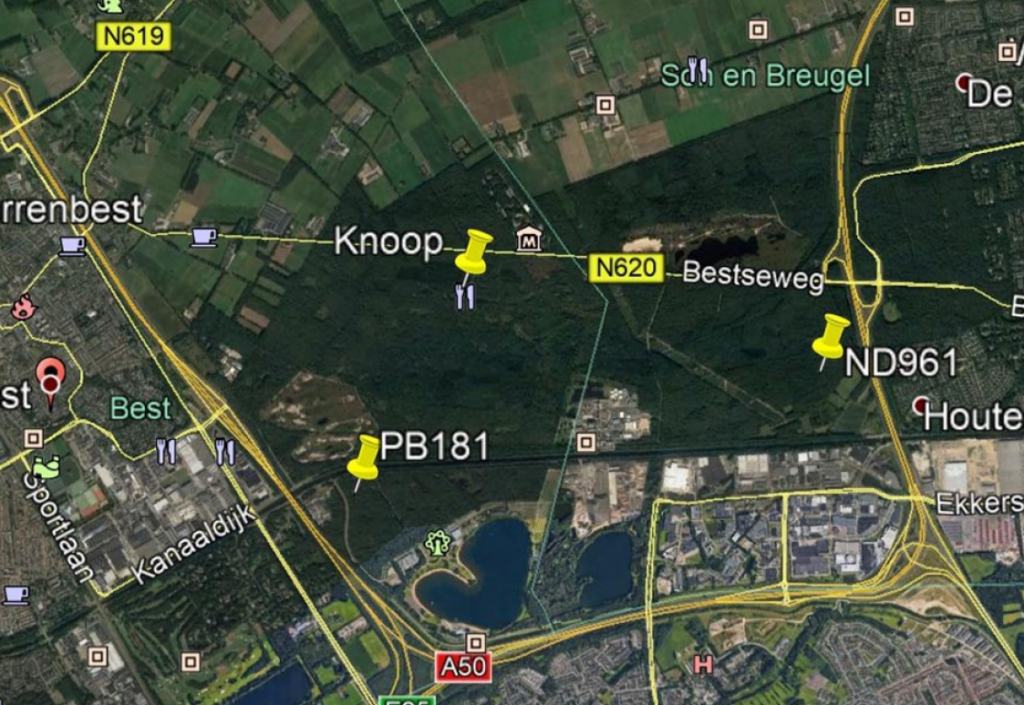
PB181- Lancaster crashed near the Lisseven in Best.
ND961- Lancaster crashed near the Zandstraat in Son.
The map also shows the location of a uniform button that probably belonged to the uniform of air bomber, Flight Lieutenant Smalley. The wreckage was found scattered over a large area. Most likely, these locations are where important parts of the aircraft, such as engines and fuselage, were found.
Details of the Collision
H.Q. 2nd TAF reports two Lancasters to have collided with each other. The crew of the Lancaster PB181, with captain Flight Lieutenant Weber, used his parachute four miles NW of Eindhoven (confirmed by group no. 83). Captain Weber was later accused of having abandoned his crew by leaving the aircraft prematurely. A transcript of an article written by Rien Wolfs from BHIC we read about this crash. To paraphrase A. van Zantvoort: “The collision caused the cockpit roof to be torn off of the fuselage and catapulted pilot Weber from the aircraft. Weber passed out. Minutes later he regained consciousness and managed to reach the ground safely. ”Mr van Zantvoort had this story first hand from Weber’s son: “Apparently, his father had stated this in a letter to his son.”
It is no picnic to escape from a crashing Lancaster. To reach the door, the crew had to face quite a number of obstacles. The clock is ticking with little time to bail out of the aircraft safely. What is more, the rear gunner was cooped up in his turret with little access to reach his parachute. In the event of a crash, no one would stand a chance of surviving. Van Zantvoort said, quote: “A Lancaster is not designed to leave the aircraft quickly in case of an emergency. It is built to transport bombs. Airmen were only supposed to take the aircraft where needed. ”
Details of the crew
The ND961
Commander Flight Lieutenant McGregor’s aircraft crashed to the ground halfway between the Boschdijk and the road to Nijmegen (from Eindhoven via Son), four hundred meters North of the Wilhelmina canal in the street, at that time called “Zandstraat”. The entire crew of eight people perished. It is worth mentioning that the crew came from different countries. Pilot C.W. (‘Shorty’) McGregor was South African, bomber Smalley, Canadian, wireless operator Cheatle, Australian and the rest of the crew British. All these different cultures from the British Commonwealth flew far from home over our village. The casualties were buried at the Woensel cemetery (Eindhoven). All are still buried there, except for Robert Cecil Smalley, who was reburied at the Canadian cemetery in Groesbeek in 1946.
The crew of the AVRO Lancaster MK III, serial ND961, call sign OF-U, 97 Squadron RAF consisted of:
The PB181
The aircraft, the PB181 of commander A. Weber, crashed in the vicinity of “Het Lisseven” in Best. RCAF police investigated the crash site and discovered five charred bodies, three of which could be identified as F / Sgt Thorn, F / Sgt Lonsdale and F / SGt Lauther. Two remained unknown.
F / Sgt Thorn was buried in a field grave 120 meters East of the crash location. F / Sgt Lonsdale was buried at the field cemetery about 140 meters from the unit. September 1945, the two unknown crew members were transferred to the allied cemetery near Nederweert. The body of Flight Sgt Lauther was buried, 8 February 1945 at the Allied section of the general cemetery “De Oude Toren” in Woensel.
Between 23 and 29 September 1945, the RAF committee conducted an investigation and discovered three more bodies inside the wreck.
The crew of the AVRO Lancaster MK III, serial / Wnr PB181, call sign OL-C from 83 Squadron RAF consisted of:
The air raids at Ladbergen
The air raid at Ladbergen that resulted in the fatal crash of the two Lancasters was one out of a series of crashes. Since the German armed forces had already been attacked four times, the Germans decided to install a large number of anti-aircraft guns around Ladbergen, through which the fifth air raid failed and a few Lancasters were lost. The aircraft was commissioned to carry out a bombardment aimed to breach the Dortmund-Ems canal, an important connecting route between the Ruhr Area and the North Sea.
The Lancaster fleet departed from Coningsby RAF airport in the county of Lincolnshire, England. They followed the southern route across liberated territory to avoid anti-aircraft and enemy hunters as much as possible. The dots on the map indicate the location of the incidents.
On the map: approach route and back flight route from the Lancasters to Ladbergen.
Ladbergen is a place northeast of Münster and was an important target area because of the junction of the waterways. The German army used this important nodal point for the supply of raw materials for the war industry and the transport of war equipment . Between 1944 and 1945, several attacks on the Ladbergen aqueducts took place.
Because of difficulties with accurately marking the target, large numbers of aircraft were needed during the attacks. The photo below clearly demonstrates this. The target point are the two red dots (aqueducts where the Dortmund-Ems canal crosses the Mühlenbach river). The surrounding craters indicate how many bombs were needed at that time to hit such a small target. In the first bombing in 1944, 10% of the force (14 Lancasters) was lost. It is clear that these missions were subject to major risks for both aircraft and crew.
After every successful attack, the Germans deployed thousands of forced laborers from the Todt Organisation to repair the damage. This led to new air raids on the aqueducts every few months, also in February 1945.
Aquaducten Ladbergen 1944 and in 1945
The Organisation Todt (O.T.) was an engineering company in Nazi Germany, named for its founder, Fritz Todt. O.T. was a government organisation under the Nazi regime. At the outbreak of the war, the organisation gained more power. In the context of “Building a new Germany” O.T. led the construction of the Atlantic Wall. Workers were put to work on a voluntary basis and within the framework of the ‘Arbeitseinsatz’. (Source: Wikipedia)
Only in March 1945, a new raid was successful. The website Bomber History reports: “The last major raid was on 3 March 1945 at 21.40 (the 2,000 night of the war). With 212 Lancasters and 10 Mosquitoes, the canal was permanently drained. Over 100 meters of canal bank were destroyed and both aqueducts were in ruins. The target area took on the appearance of a lunar landscape”.
A visit to Ladbergen and the Dortmund-Ems canal aqueduct and the junction of the Mühlenbach river in November 2019, show a peaceful and restored canal.
Aqueduct over Mühlenbach. Present day, no trace of the violent bombings and devastation of 1945
During our visit, the difference in height between the water in the canal, the river Mühlenbach and the surroundings of sometimes 4 meters was clearly noticeable. It quickly becomes clear to us that a dyke breach would have drained the entire canal. You can still find some farmhouses built after the war in the area. Obviously, this area has suffered from great damages.
The Lancaster bomber
The Lancaster was a four-engine heavy bomber built by A.V. Roe & Company, a well-known British aircraft manufacturer that produced various famous aircraft from 1910 to 1963. The Lancaster was mainly used by the British Air Force and was an improved version of the Avro-Manchester that was renamed Lancaster at a later stage. On the outside, the Lancaster only differed from the Avro-Manchester type because it did not have a central vertical tail fin and also, the Avro-Manchester only had two engines whereas the Lancaster had four.
Lancaster 97 Squadron before take-off when loading the bombs
Since 1942, the Lancasters flew 156,000 missions. Thanks to the enormous payload, the Lancasters dropped 608,612 tons of bombs A total of 3,249 Lancasters were lost. With the largest number of missions to its name, the Lancaster flew 139 issions and served until 1947.
Request through the South African Embassy
After investigating the Whitley V (see Heritage sheet of Heritage Association Dye van Best, 1st quarter 2019: Crashed plane in Best on June 18, 1941), we received an unexpected request for information about another aircraft that had crashed in the area of Best. It was about the two planes that had collided with each other and crashed in Best and Son.
A representative of the South African embassy, Mr P.A. Stemmet, ex-pilot, has plans to erect a monument of commemoration. During the Second World War, a total of three South African pilots were killed in action on Dutch soil, one of whom Charles William McGregor. At the time of the accident, he was just under 26 years old.
The death notice of C.W. McGregor in the Johannusburg Times.
The remains of the crew, including those of C.W. McGregor, were buried in Eindhoven at the Woensel cemetery “Old Tower”. Part of the cemetery is used as a military cemetery. 686 airmen that were killed in action are buried there. 570 British, 38 Australians, 50 Canadians, 1 South African, 4 Dutch, 9 New Zealanders and 14 Polish. 8 casualties remained unidentified.
The war grave at Woensel Cemetery “Old Tower”
For those who gave their lives
Various sponsors were approached, who voluntarily cooperated in the form of work, materials, advice and money. The monument was built around a propeller with a plaque explaining the story of the tragic accident in two languages. The monument is in a prominent position at the entrance of the Museum Wings of Liberation. Visitors cannot overlook the Wings of Liberation museum and ‘t Boshuys as the location is simply beautiful. Saturday, 8 February 2020, exactly 75 years after the fatal air crash, the monument was officially unveiled.
We truly hope that many will find a visit most rewarding and will make the effort of getting to know the story behind the monument and take a moment to reflect on the many young people that gave their lives for our freedom today. Let us learn from history and hope this will never happen again. Unfortunately, history and the world around us have taught that this is something that cannot be taken for granted.
The tombstone of F/Lt R.C. Smalley, one of the crashed crew members, strikingly says:
War grave at Groesbeek Canadian War cemetery
Greater love hath no man than this. That a man lay down his life for others.
(Free translation: No one has more love than this. That a man gives his life for others.)
Many have contributed to this article entirely free of charge. Thank you all sincerely.
Heritage Association Dye van Best, December 2019

